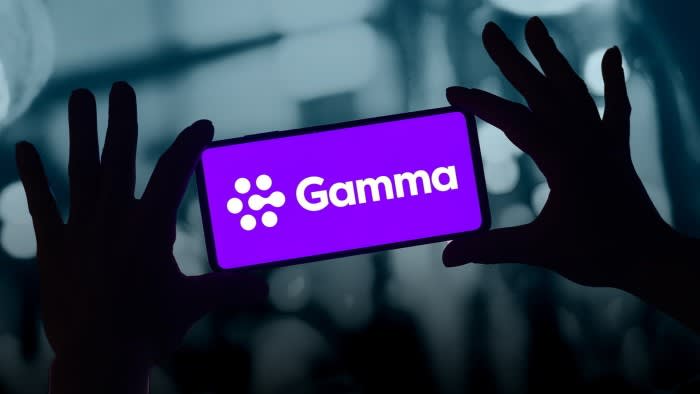Unlock the Editor’s Digest for free
Roula Khalaf, Editor of the FT, selects her favourite stories in this weekly newsletter.
There’s one thing a bunch of companies on London’s main market share in common, and it’s not the sector in which they operate. They are graduates of London’s junior market. The Alternative Investment Market (Aim) turns 30 next year and it might be about to get the shock of its life if the chancellor pulls the plug on a valuable inheritance tax break.
With lighter rules for young and smaller companies, Aim can deliver a bumpier ride for investors and companies than the main market. There have been scandals, frustrations over valuations, and a fair few no-hopers. But there have also been interesting and rewarding performers, from breweries (such as Young & Co’s) and holiday operators (Jet2) to games developers (Frontier Developments) and scientific instrument designers (Judges Scientific). Nor are they always small — Keyword Studios is costing its private equity buyer £2bn — and many operate in international markets.
Companies typically move up to the main market because of their size, to put themselves in front of index trackers and global investors, and to achieve a new base for the share price. But that depends on the company. Former market darling Asos went straight into the FTSE 250 index when it switched, only to be booted out a year later as the fast fashion group hit tricky times.
Now Gamma Communications has announced it is considering a move. If the tax break that helps underpin valuations for qualifying Aim companies is taken away, many more firms may be persuaded to abandon that market for the bright lights of its big sister.
BUY: Gamma Communications (GAMMA)
Business communications software company Gamma Communications’ share price received a big boost during Covid lockdowns. Growth did not materialise as fast as the market anticipated a few years ago, but Gamma has continued to progress steadily long after Covid lockdowns ended.
In the six months to June, revenue increased by 10 per cent to £283mn while adjusted cash profit rose 10 per cent to £62mn. Management is now guiding for full-year adjusted earnings to be at the top of the range of market expectations.
Gamma’s cloud private branch exchange (PBX) allows businesses to make calls over the internet rather than using telephone lines. It is also cheaper and allows them to scale up and down the number of lines more easily. In the UK, which is Gamma’s largest market, the number of PBX seats rose by 5 per cent to just over 1mn, while in Europe it was flat at 161,000.
Gamma’s market cap is now over £1.5bn and it is considering a move from Aim to the main market, which could provide a share price boost. Broker Peel Hunt currently has the shares trading at a forward price/earnings (PE) ratio of 17, which isn’t expensive given the steady growth, strong cash flow and further potential for expansion.
HOLD: Fevertree Drinks (FEVR)
Fevertree Drinks revealed a 2 per cent increase in constant currency (CC) revenues at the half-year mark, which means that sales were effectively flat given the inflation rate.
Trading conditions were mixed, appropriately enough, with unfavourable weather conditions hitting sales volumes in the domestic market, set against a more than favourable outcome in the US — now the premium mixer producer’s largest market by sales. Indeed, there were further market share gains across the Atlantic where the group holds down pole position in both the tonic water and ginger beer categories.
Revenues in the UK declined by 6 per cent, against a 10 per cent CC increase in the US, while sales in continental Europe also pulled back sharply. We know that the wet trade in the UK got a boost from high-profile sports events over the summer, most notably the Uefa European Football Championship, but intuitively you would imagine any advantage here would be largely confined to beer sales.
The share price fell sharply on release of the interim figures, and one suspects that at some point chief executive Tim Warrillow and his team will need to re-examine marketing strategies if there has been a definitive switch in consumer priorities. A rating of 28 times consensus earnings sufficiently encompasses growth expectations.
HOLD: Harworth Group (HWG)
Setting high targets seems to have paid off at Harworth Group, which is on track to meet its £1bn net development target by 2027.
The brownfield land specialist saw its EPRA net development value increase 3.5 per cent to £687mn in the first half of the year.
Revenues were also strong, more than doubling to £41.3mn, compared with £18.2mn the previous year. The company is also maintaining its policy of increasing dividend per share by 10 per cent each year, increasing it to 0.489p. “It will increase by 10 per cent over [the course of] the year. This is our eighth consecutive year of increasing [the dividend] by 10 per cent,” said Lynda Shillaw, chief executive officer.
The focus on growing the logistics pipeline seems to be paying off for Harworth. However, with a forward-looking price-to-earnings ratio of 70.1 times consensus forecasts, much of this already seems to be baked into the share price.
https://www.ft.com/content/c2e5cff5-497f-4520-9963-2324bf3f2ade


